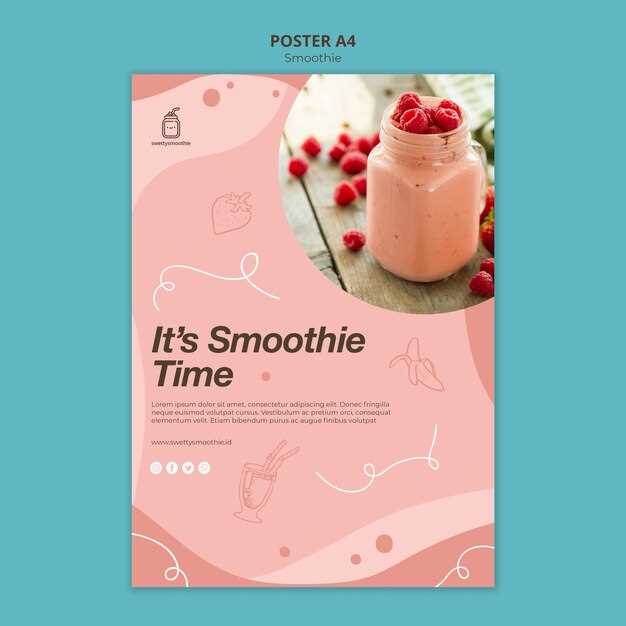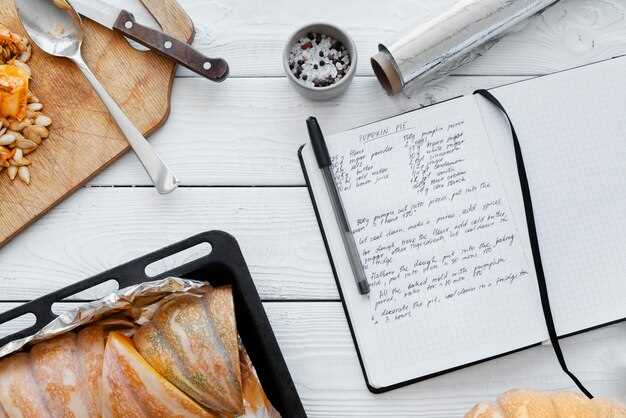Upgrade your nourishment game with these rapid fruit-packed elixirs. For a quick energy increase before a workout, combine 1 cup of spinach, ½ frozen banana, ½ cup of mixed berries, and 1 cup of almond milk. This combination delivers a surge of potassium and antioxidants.
Craving a post-workout recovery beverage? Try mixing 2 scoops of protein powder (whey or vegan), 1 cup of coconut water, ½ cup of frozen mango, and a tablespoon of chia seeds. The electrolytes from coconut water, combined with protein, aid in muscle repair and hydration. Chia seeds provide sustained energy release.
Looking for a satisfying breakfast alternative? Blend ½ avocado, 1 cup of kale, ½ green apple, the juice of ½ lemon, and ½ cup of water. This fiber-rich blend will keep you full and energized until lunchtime. Adjust sweetness by adding a few drops of stevia if needed.
How to Build a Liquid Base
Prioritize liquids with minimal impact on flavor: water, unsweetened almond milk, or chilled green tea. Use 1/2 to 1 cup for a standard portion.
For added richness, integrate a smaller quantity (1/4 – 1/2 cup) of yogurt (Greek or plant-based) or kefir. These offer probiotics and enhance creaminess.
Adjust the quantity of liquid depending on the ice content or frozen produce. Use less liquid if your fruits and vegetables are already frozen solid.
Consider adding juice (orange, apple, or grape) only if you need extra sweetness. Be mindful of added sugars and their nutritional impact.
Alternatives to consider: coconut water for electrolytes, or nut milk (cashew or macadamia) for distinct flavor profiles. Adjust other ingredients accordingly.
For a thinner concoction, add more liquid; for a thicker, use less. Blend gradually, adding liquid as needed to achieve desired consistency.
Quick Breakfast Elixir Formulas
Fuel mornings rapidly using these formulas. The base is always: 1 cup liquid (water, milk, yogurt, juice) + 1 cup greens (spinach, kale) + 1/2 cup fruit (frozen berries, banana).
Protein Power-Up
Add one of these to the base: 1 scoop protein powder (whey, pea, soy), 2 tablespoons nut butter (almond, peanut), or 1/4 cup Greek yogurt. Consider adding a dash of cinnamon for flavor.
Energy Explosion
Integrate one of these boosters: 1 tablespoon chia seeds, 1 tablespoon flaxseed meal, or 1/4 cup cooked oats. A touch of ginger enhances the taste.
Tropical Twist
Use coconut water as the liquid. Swap berries for mango or pineapple. Incorporate a squeeze of lime juice.
Blend until creamy. Adjust liquid to reach desired consistency. Consume immediately for maximum nutrient retention.
Blending Tips for Perfect Fruit & Veggie Concoctions
For a creamy texture, freeze your fruits beforehand. Aim for at least 2 hours of freezing time for bananas, berries, or mangoes. This reduces the need for ice, which can dilute the flavor.
Layer ingredients properly. Start with liquids (juice, milk, yogurt), then add leafy greens, soft fruits, hard fruits, and finally ice. This helps the blade pull ingredients down more efficiently.
Adjust liquid amounts based on the power of your mixer. High-powered models might need less liquid, while standard units benefit from more to prevent motor strain.
Pre-chop tough ingredients like carrots, ginger, or frozen chunks into smaller pieces (around 1 inch) to ease the blending process and ensure a consistent mixture.
If your beverage is too thick, add a tablespoon of liquid at a time and re-process until you reach your desired consistency. Conversely, if it’s too thin, add more frozen fruit or a scoop of protein powder.
Pulse your mixer a few times initially to break up frozen pieces before running it on a higher speed. This prevents the blade from getting stuck and ensures a smoother result.
Clean your mixer immediately after use. Rinse the pitcher and blade with warm water, then add a drop of dish soap and blend for a few seconds. This simplifies thorough cleaning later.
Store leftover preparations in an airtight container in the refrigerator for up to 24 hours. Be aware that separation may occur, so stir well before consuming.
Enhance flavor profiles with a pinch of spices like cinnamon, nutmeg, or turmeric. These additions not only boost the taste but also add extra nutritional value.
Consider adding nut butter or avocado for creaminess and richness. A small amount (1-2 tablespoons) can significantly improve the texture and add beneficial fats.
Freezing Liquid Fruit Concoctions for Later
Freeze blended fruit beverages in airtight containers, leaving 1/2 inch headspace to accommodate expansion. Mason jars are suitable if using straight-sided versions; avoid those with shoulders to prevent cracking. Alternatively, use freezer-safe bags, laying them flat during freezing for efficient stacking.
For individual portions, utilize ice cube trays or muffin tins. Once frozen solid (approximately 4-6 hours), transfer the cubes or pucks to a freezer bag for long-term storage. This allows for portion control and easier blending later.
Frozen creations maintain optimal quality for up to 3 months. Label each container with the date and contents before freezing. Consider adding a small amount of lemon juice (1 teaspoon per batch) to prevent browning of some fruits like bananas and apples.
Thaw frozen mixes in the refrigerator overnight or for a few hours at room temperature. If using a microwave, use short bursts at low power to avoid cooking the contents. For the best texture after thawing, re-blend the mixture briefly before savoring.
Ingredients containing high water content, such as watermelon or cucumber, may alter texture upon thawing. Adjust the liquid proportion accordingly when preparing the initial mixture if you are preparing batches specifically for freezing. Avoid freezing preparations containing dairy, as they often separate and become grainy upon thawing.
Q&A:
I’m new to making smoothies. What’s the easiest recipe to begin with if I just want something quick and reasonably healthy?
A basic fruit smoothie is the perfect starting point. Combine one cup of your preferred liquid (water, milk, or yogurt are good choices) with one cup of frozen fruit (berries, banana slices, or mango chunks work wonderfully). You can also add a handful of spinach for an extra nutritional boost. Blend until smooth. Adjust sweetness with a bit of honey or maple syrup if desired. It’s simple, customizable, and provides a good foundation for more advanced recipes later.
I’m trying to cut back on sugar. Can I still enjoy smoothies without adding sweeteners, and if so, how do I make them taste good?
Absolutely! Many fruits are naturally sweet enough to create satisfying smoothies. Focus on using ripe bananas, mangoes, or dates as your primary sweetness source. Experiment with spices like cinnamon, nutmeg, or ginger, which can add depth and complexity without extra sugar. Adding ingredients such as avocado can also add a creamy texture and mellow out any tartness. A splash of lemon or lime juice can brighten the flavor profile, too.
I only have fresh fruit at home, not frozen. Can I still make good smoothies, or is using frozen fruit that significant?
You can certainly use fresh fruit. However, using frozen fruit impacts the smoothie’s consistency. To achieve a similar chilled, thick texture with fresh fruit, add ice cubes or freeze your fruit for at least 30 minutes before blending. Also, consider adding a creamy base like Greek yogurt or avocado to enhance the smoothness.
I have dietary restrictions (dairy-free and gluten-free). Are there smoothie recipes suitable for me?
Many smoothie recipes are naturally dairy-free and gluten-free. For dairy-free options, substitute cow’s milk with almond milk, soy milk, oat milk, or coconut milk. Ensure any protein powders or other additions are certified gluten-free. Check ingredient labels carefully to prevent cross-contamination. Recipes using fruit, vegetables, nut butters, and dairy-free milk replacements are usually a safe bet.
Can smoothies be used as a meal replacement? If so, what should I include to make them more filling and nutritious?
Smoothies *can* function as meal replacements, but they require specific ingredients to offer sustained energy and nutrition. Be sure to add a good source of protein like protein powder, Greek yogurt (or dairy-free yogurt), nuts, or seeds. Healthy fats from avocado, nut butter, or flax seeds will also contribute to satiety. Add fiber-rich ingredients like leafy greens, chia seeds, or oats to support digestive health and keep you feeling full for longer. And, it’s always beneficial to include a wide variety of fruits and vegetables to get a more balanced array of vitamins and minerals. Think of it not only as something that quenches you, but something that gives you necessary ingredients.




